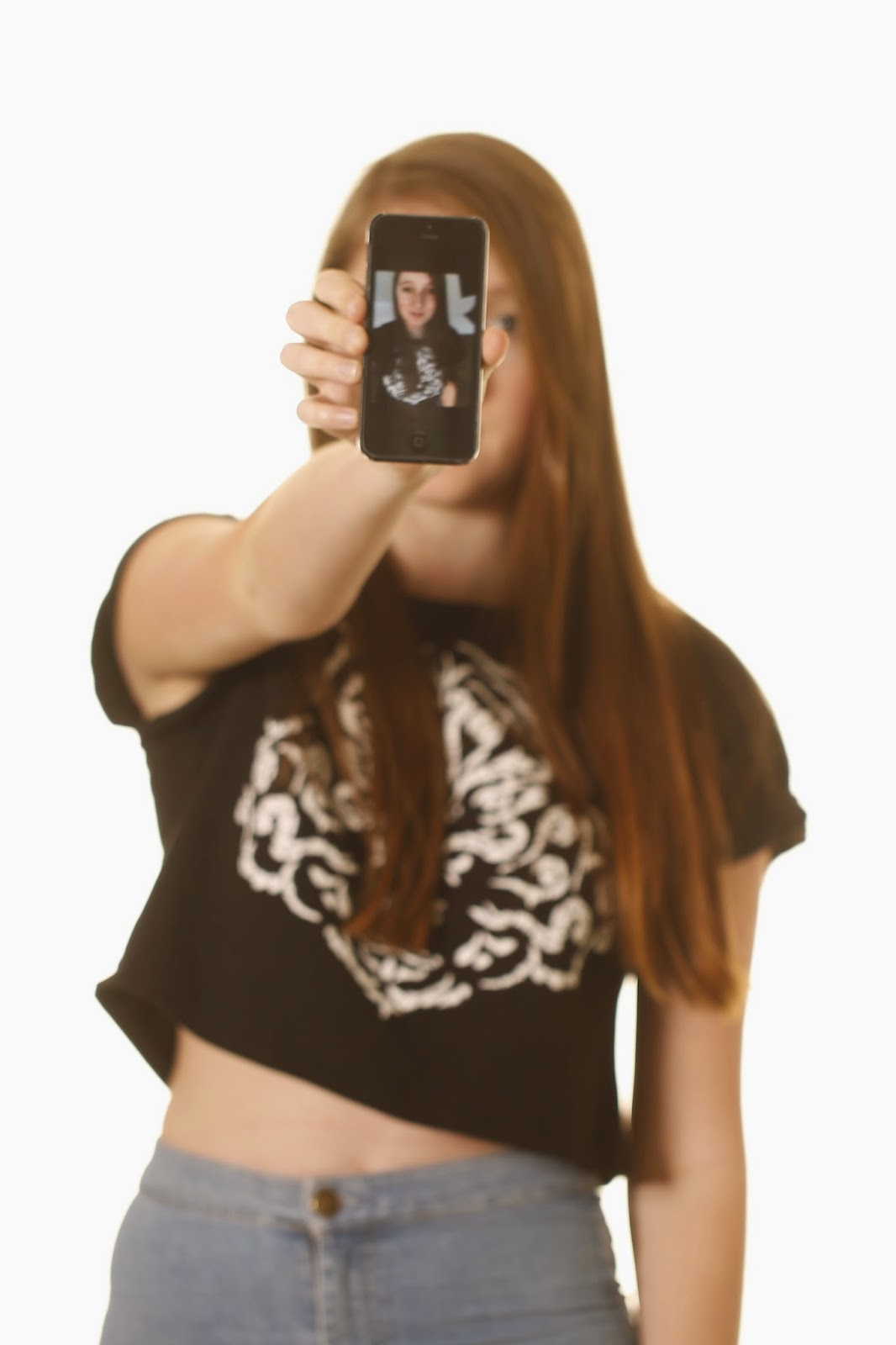For this Editorial project I have looked at how people are
changing as they become active on social media sites. I looked at how people portray themselves
online: many people edit their lives down and only show the best of themselves
because they do not want people to see their real lives. My photographs look at
how people are becoming lost to the version of their world they have created
digitally and I feel that my photographs show this through the use of shallow
depth of field with the focus on the mobile phone.
I have been influenced by society and modern culture: it is
acceptable to take a ‘selfie’ during any activity and all ages can be involved;
the only limit is the length of your arm. Many celebrities and powerful
political people are becoming involved and the genre quickly became instantly
recognisable by the simple styling of the photograph. Personally I do not
understand the obsession with taking ‘selfies’ throughout the day just to post
online for fun but exploring my own self-image during this project was
intriguing.
I feel that my final outcomes have been successful in
showing that people are losing themselves to technology, the depth of field
showing the person through the phone was a symbolic way of showing people online
because many social media sites have apps that can upload photographs straight
from phones. My first idea I tried for this project was not as successful as I
hoped for because when I showed people my work they did not see the image in
the same way that I did so this made me stop and rethink my idea to find a way
that people would be able to see my idea more clearly.
My images could have been improved if I continued with
studio shooting as I feel these are more successful in showing the person
becoming lost to the social media sites because the plain background makes them
appear as though they aren’t in a location anymore and have been taken into the
digital world.
I have used many different techniques for this shoot as I
have explored a few possible ideas for my project. I enjoyed being able to
develop my technique from in the studio to going out on location; in the studio
I was shooting on ISO 100 and this meant the shutter speed was slowed down so
in many of the images there is slight movement with the phone so the screen looks
distorted. While I was on location I was using the natural lighting available
so I raised the ISO and this allowed me a faster shutter speed that stopped the
motion blur.
I did not encounter any major problems however one slight
problem was that I struggled to manually focus the image so that the phone was
sharp as the person could not remain still and each model was stood in a
slightly different position so the focus point was constantly changing, to try
and get the phone in focus I took multiple images changing the focus each time.
The weekly group critiques we had helped me to focus my idea
as people did not understand what was I was trying to show with my first idea
as I think I took the idea too far and did not make it literal enough to be easily
understood. In a tutorial we discussed ideas how to improve my technique so
that I was not getting motion blur, this helped me to greatly improve my photographs,
as the focus of the image is more obvious.
I think this project has helped me improve my studio skills
as I do not use the studio often and trying a new technique in the studio was
difficult at first but once I got back into the studio I really enjoyed it.
This project as challenged my ability to work with models
who I have never met before as the many of the models from the studio shoot
were from around the university building and I have never talked to them
before. On location I was challenged
again because I was working with younger models who did not want to sit still
and pose for long while I was struggling to focus manually.
If I had the chance to start this project again
I would not spend so long trying to make my first idea work and go right ahead
with my second idea because this worked faster and easier and I feel that it
gets my idea across that people are becoming lost to technology and social
media sites.










































